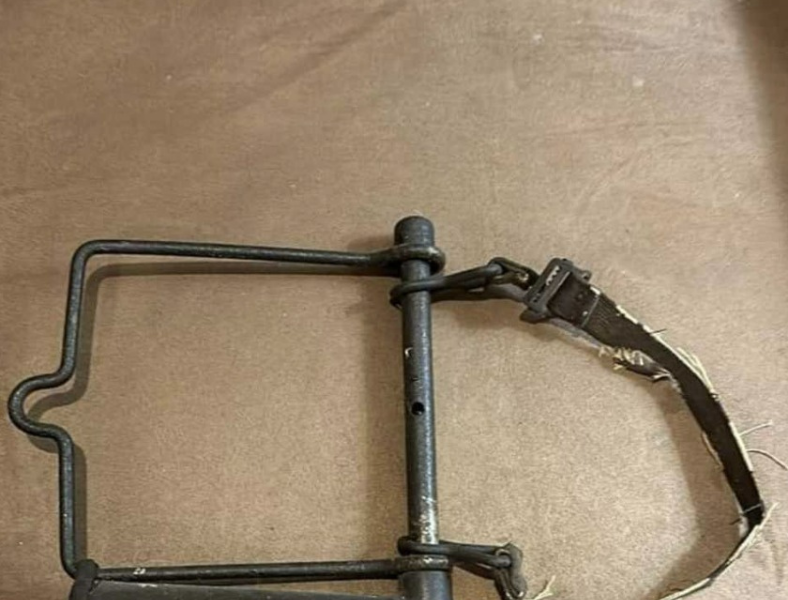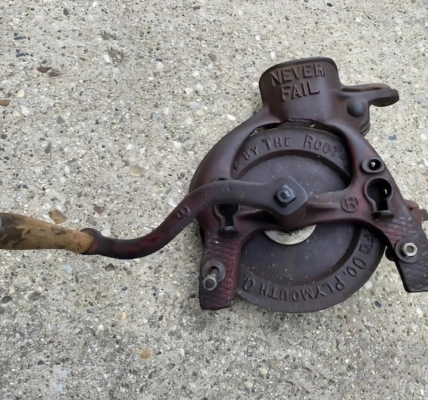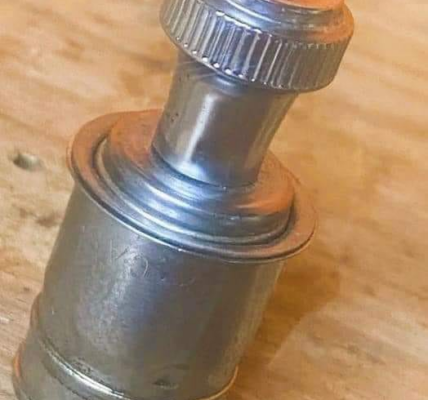Equine care has evolved dramatically over the centuries, with each era contributing unique tools and techniques to the field. One such fascinating artifact from a bygone era is the antique horse drencher—a testament to the ingenuity and resourcefulness of early veterinary professionals. Let’s dive into the history of this captivating relic, uncovering its purpose, craftsmanship, and significance in the journey of equine care.
What is an Antique Horse Drencher?

An antique horse drencher, often called a drenching bit, was a tool designed to administer medicinal liquid treatments to horses. In times when veterinary resources were limited, these devices played a critical role in ensuring horses received necessary treatments, especially for conditions like colic. Typically made from brass with leather straps and a funnel attached, the horse drencher allowed veterinarians to safely and effectively administer medication by mouth, ensuring that the liquid reached the horse’s stomach.
The ingenuity behind this device reflects a period when veterinary practices relied on practical, straightforward tools to care for large animals. Despite their simplicity, these drenchers were remarkably effective, bridging the gap between necessity and innovation.
The Role of the Drenching Bit in Veterinary Practices
In the mid-20th century, the drenching bit was a staple in equine care, particularly for administering liquid remedies to draught horses. The design of the drenching bit was practical yet ingenious: the brass bit would be inserted into the horse’s mouth, while a leather strap helped secure it in place. A funnel attached to the bit allowed the veterinarian to pour the liquid directly into the horse’s mouth. In some cases, a rope would be tied to the bit and used to lift the horse’s head, encouraging it to swallow the remedy.
For a veterinarian in the field, this device was invaluable. Many horses are prone to colic, a potentially life-threatening condition involving severe abdominal pain, which often requires immediate treatment. The drenching bit was a quick, effective way to administer fluids and medicine, providing relief to horses and helping them recover faster. It was a solution that combined simplicity and effectiveness, designed with a deep understanding of the horse’s anatomy and behavior.
Transitioning from Traditional to Modern Equine Care
As veterinary science advanced, so did the tools and methods used to care for horses. By the 1950s, the drenching bit began to fall out of favor as more efficient and less invasive tools were developed. One of the most significant advancements was the introduction of the stomach tube, a flexible tube inserted through the horse’s nose or mouth to deliver medication directly into the stomach. This method offered greater control and precision, reducing the risk of aspiration—a common concern with older drenching methods.
The shift from drenching bits to stomach tubes marked a turning point in equine care, reflecting a broader movement within veterinary science toward less invasive procedures. Today, stomach tubes and modern syringes have largely replaced the drenching bit, though these antique tools remain a symbol of the resourceful spirit that has always driven the field.
Craftsmanship and Design: A Tribute to Past Ingenuity
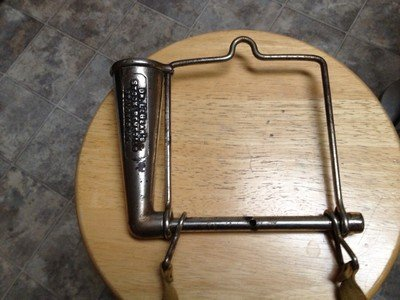
The antique horse drencher embodies the meticulous craftsmanship and functional design that characterized veterinary tools of its time. Made from durable brass, these devices were built to withstand the rigors of fieldwork, and their components were crafted with care to ensure reliability and ease of use.
The brass construction and leather strap showcase the level of detail that went into their design. This attention to craftsmanship wasn’t just about durability; it also reflected an understanding of the horse’s needs and the practical challenges faced by veterinarians in rural areas. Each piece was carefully designed to fulfill its role efficiently, ensuring the welfare of the animal and the safety of the veterinarian.
In today’s world of mass-produced tools, these antique horse drenchers remind us of a time when each piece of equipment was a work of art, crafted with intention and purpose. They offer a glimpse into the history of equine care, where tools were as much about form as they were about function.
The Evolution of Equine Care: Lessons from the Past
The antique horse drencher serves as a symbol of the ongoing evolution of equine care, a field that has continuously adapted to new challenges and discoveries. Each generation of veterinarians has built upon the knowledge and innovations of those who came before, leading to modern techniques that are safer, faster, and more effective.
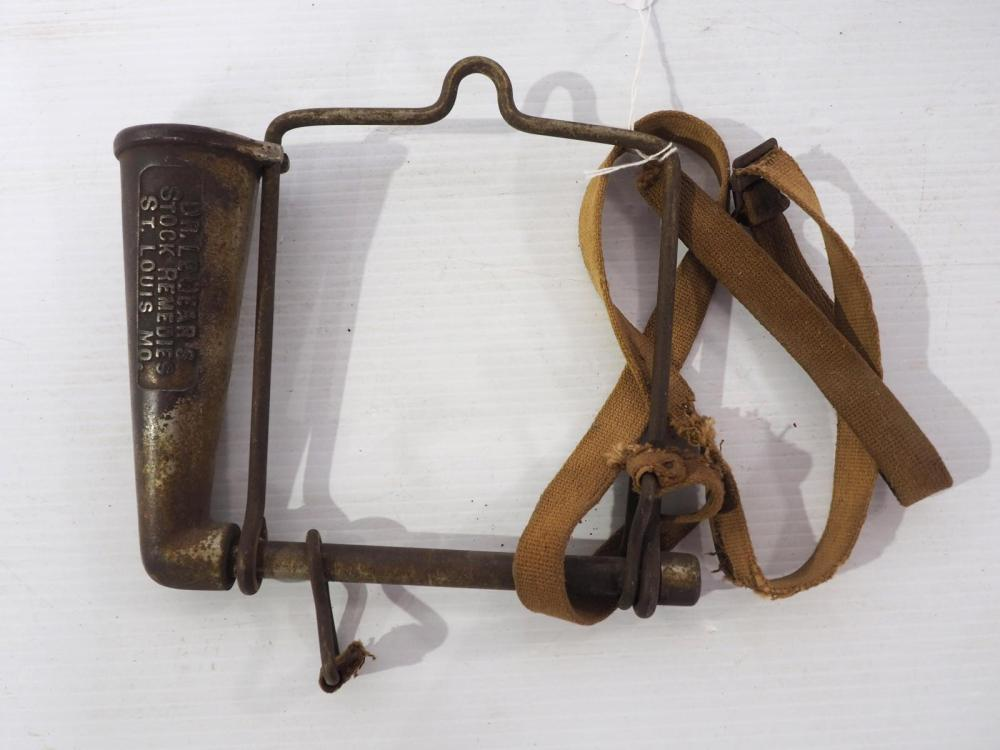
Today, equine care includes advanced diagnostic tools, such as ultrasounds, endoscopy, and digital radiography. Treatment options have expanded to include everything from antibiotics to acupuncture, allowing veterinarians to offer more targeted and holistic care. The progress made in equine care highlights the importance of both honoring the past and embracing the future.
As we look back on tools like the antique horse drencher, we gain a deeper appreciation for the pioneers of veterinary science. Their work paved the way for the innovations we see today, and their commitment to animal welfare continues to inspire those who work in the field.
Honoring the Legacy of the Horse Drencher
Preserving relics like the antique horse drencher allows us to honor the contributions of past veterinary professionals. These tools represent more than just an old-fashioned way of doing things; they embody a legacy of care, compassion, and resourcefulness. By studying these artifacts, we gain insights into the challenges and solutions that shaped the development of veterinary medicine.
The horse drencher is a testament to the bond between humans and horses—a bond that has existed for centuries and continues to shape our understanding of these magnificent animals. In preserving such relics, we acknowledge the ingenuity of those who came before us and recognize the importance of their work in advancing equine care.
Conclusion: Reflecting on the Antique Horse Drencher’s Legacy
The antique horse drencher may seem like a simple tool, but it holds a wealth of history within its brass frame and leather straps. It serves as a reminder of the ingenuity and resilience that have always defined the field of veterinary science. From its role in administering lifesaving treatments to colicky horses to its eventual replacement by more advanced tools, the horse drencher is a symbol of the ongoing journey of equine care.
As we continue to push the boundaries of veterinary medicine, we carry with us the lessons of the past, honoring the legacy of tools like the horse drencher. They remind us that while technology may change, the commitment to animal welfare remains a constant—a timeless mission that spans generations. By preserving and celebrating these relics, we not only pay tribute to those who paved the way but also ensure that their spirit of innovation lives on, inspiring the future of equine care.
